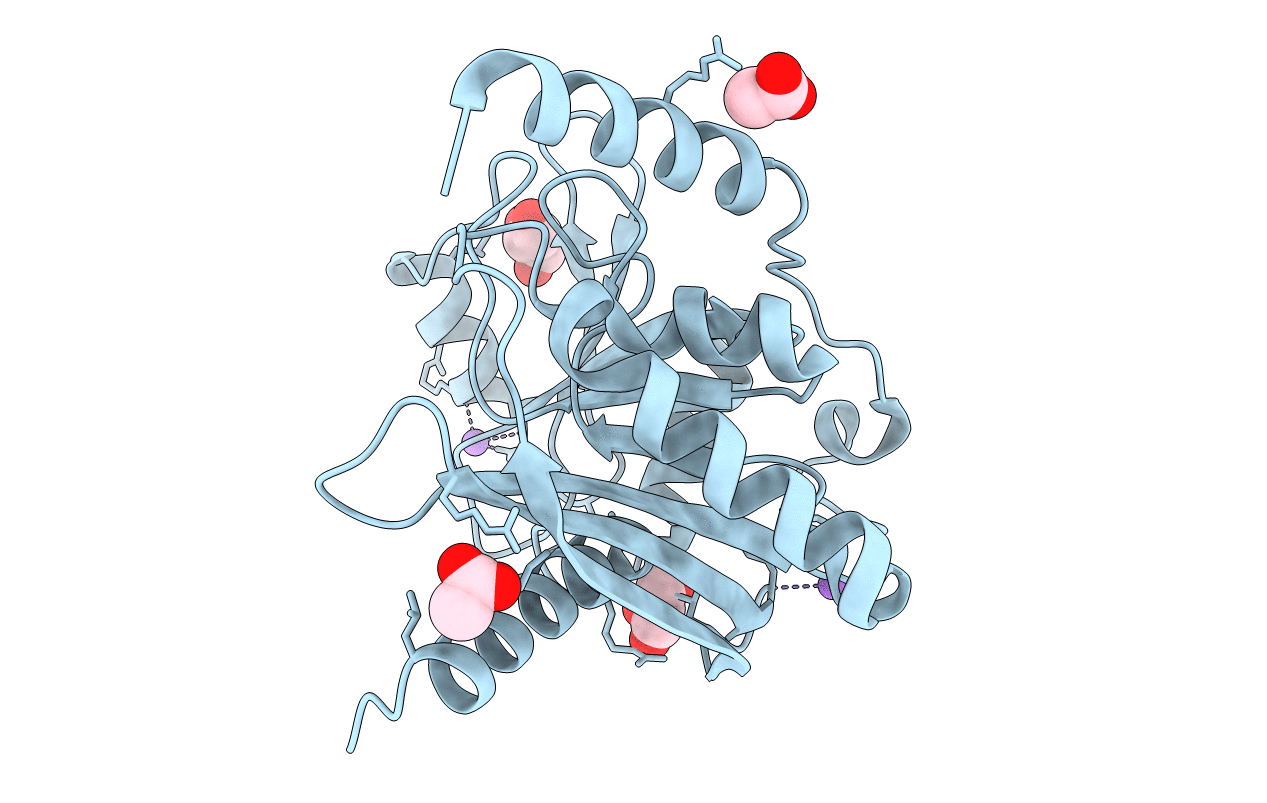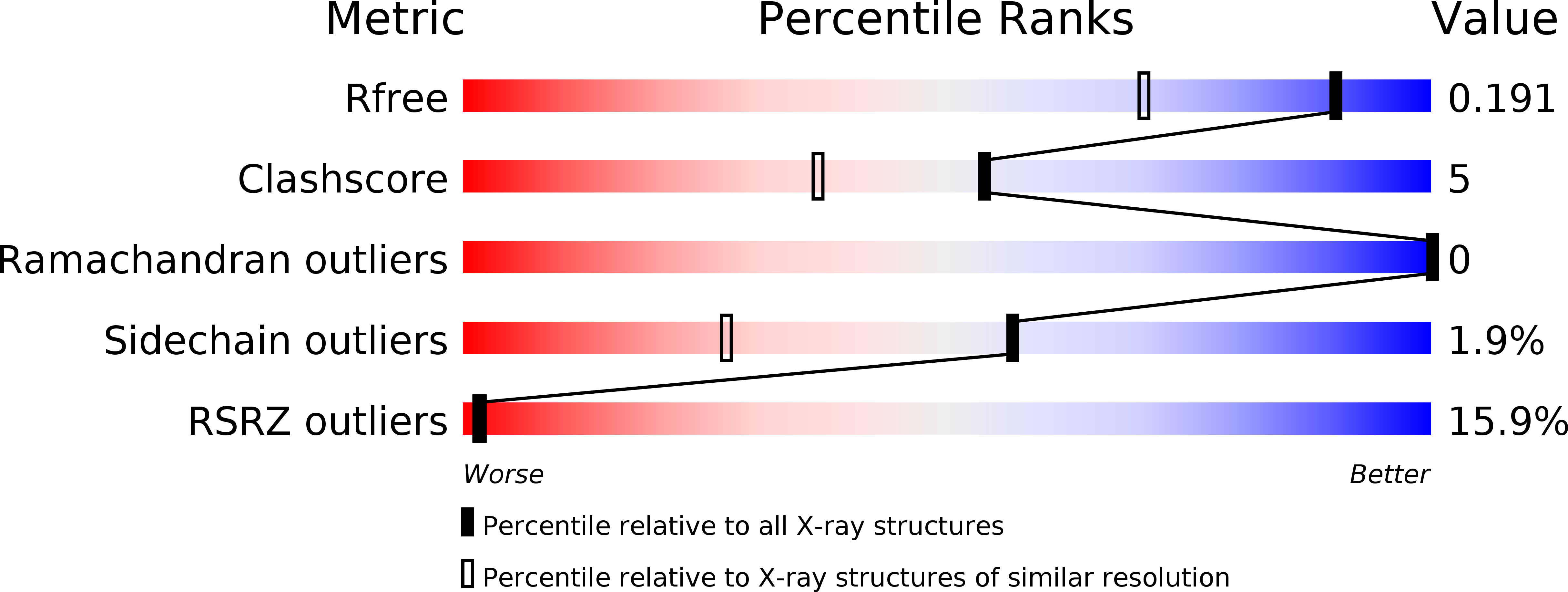
Deposition Date
2019-05-15
Release Date
2019-09-04
Last Version Date
2023-10-11
Entry Detail
PDB ID:
6OZE
Keywords:
Title:
Crystal structure of the catalytic domain of human Endonuclease V (C140S/C225S/C226A/C228S)
Biological Source:
Source Organism:
Homo sapiens (Taxon ID: 9606)
Host Organism:
Method Details:
Experimental Method:
Resolution:
1.50 Å
R-Value Free:
0.19
R-Value Work:
0.17
R-Value Observed:
0.17
Space Group:
P 31


